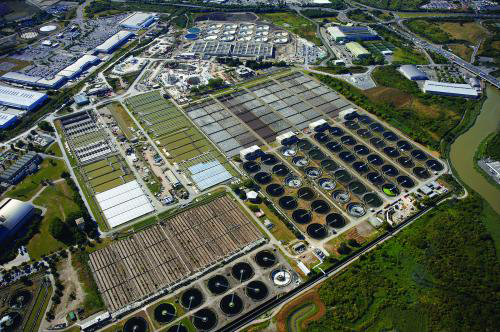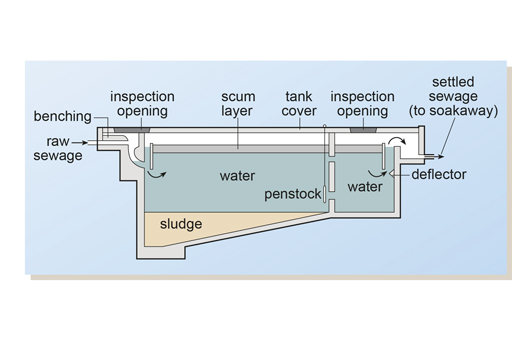4.3.1 Human excreta
Open defecation and poorly constructed pit latrines are obvious sources of human waste and can easily pollute surface and groundwater. Where water-flushed sewerage systems are present, inadequately treated sewage can also be a major source of human waste. (Note the difference between the words ‘sewage’ and ‘sewerage’. Sewage is mixed wastewater that contains human waste from flush toilets, commercial and industrial wastewater, and frequently also surface water run-off. Sewerage is the network of underground pipes – sewers – through which the sewage flows.)
Untreated or partially treated sewage can contribute to high levels of oxygen demand in the water and also introduce toxic substances into the aquatic environment, in addition to pathogenic micro-organisms. In Ethiopia, sewage may be treated in waste stabilisation ponds (these will be described in Study Session 11). If not operated properly, these ponds can pollute rivers. In many parts of the world, sewage from large towns and cities is usually treated in large mechanical–biological plants (Figure 4.5) that normally produce good quality effluent but can still be a source of pollution if systems fail.

In Ethiopian towns and cities many households use septic tanks to dispose of their sewage. These are underground tanks into which sewage is piped. The waste remains in the tank for long enough for the solids to settle out and the settled sewage is discharged from the tank, usually into the surrounding soil via a soakaway. If the tank is too small to retain the sewage for long enough, or if many septic tanks are close together, or if they leak or are cracked, this can lead to pollution of groundwater. It is the aim in Ethiopia to have septic tanks that keep the sewage inside for a minimum of three days so that the organic solids will settle out as sludge. Figure 4.6 shows the main features of a properly constructed septic tank.

4.3 Possible sources of water pollution
